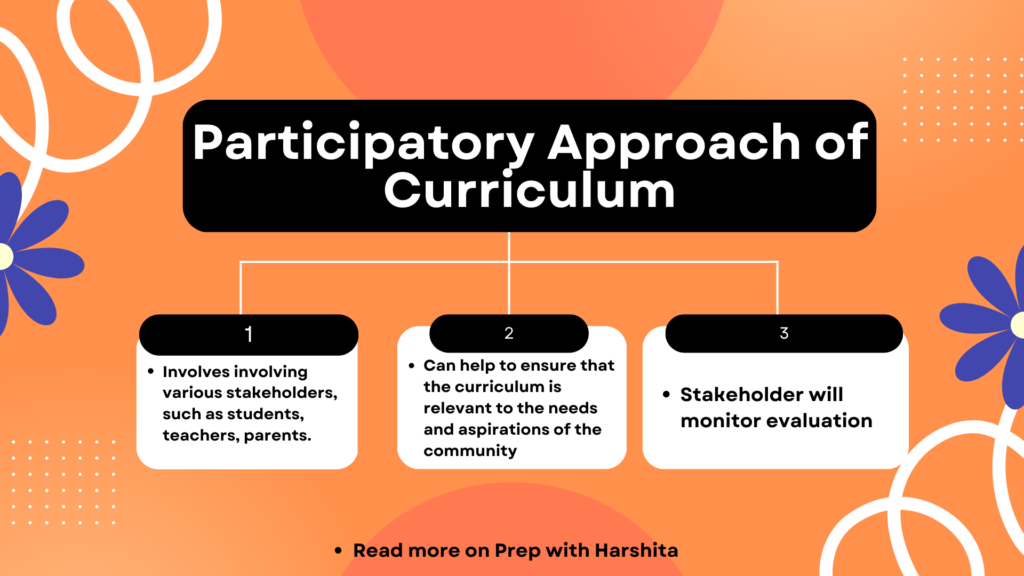A participatory approach to curriculum development involves involving various stakeholders, such as students, teachers, parents, and community members, in the process of developing and designing a curriculum.
This approach is based on the idea that those who are directly involved in the education process are the best source of information about what should be included in the curriculum.
The participatory approach to curriculum development involves the following steps:
- Identifying stakeholders: The first step is to identify the stakeholders who will be involved in the process. This may include students, teachers, parents, community members, and educational experts.
- Developing a shared vision: The stakeholders should come together to develop a shared vision for what they want the curriculum to achieve. This vision should be based on the needs and aspirations of the community.
- Identifying goals and objectives: The stakeholders should identify specific goals and objectives for the curriculum.
- Developing curriculum content: The stakeholders should work together to develop the content for the curriculum. This may include selecting textbooks, designing lesson plans, and creating assessments.
- Implementing the curriculum: Once the curriculum is developed, it should be implemented in the classroom. The stakeholders should work together to monitor the implementation and make any necessary adjustments.
- Evaluating the curriculum: Finally, the stakeholders should evaluate the curriculum to determine if it is achieving the goals and objectives that were established. If necessary, adjustments should be made to improve the curriculum.
This approach can help to ensure that the curriculum is relevant to the needs and aspirations of the community. Also, it can improve the quality of education provided to students.



13 thoughts on “Participatory Approach in Curriculum”